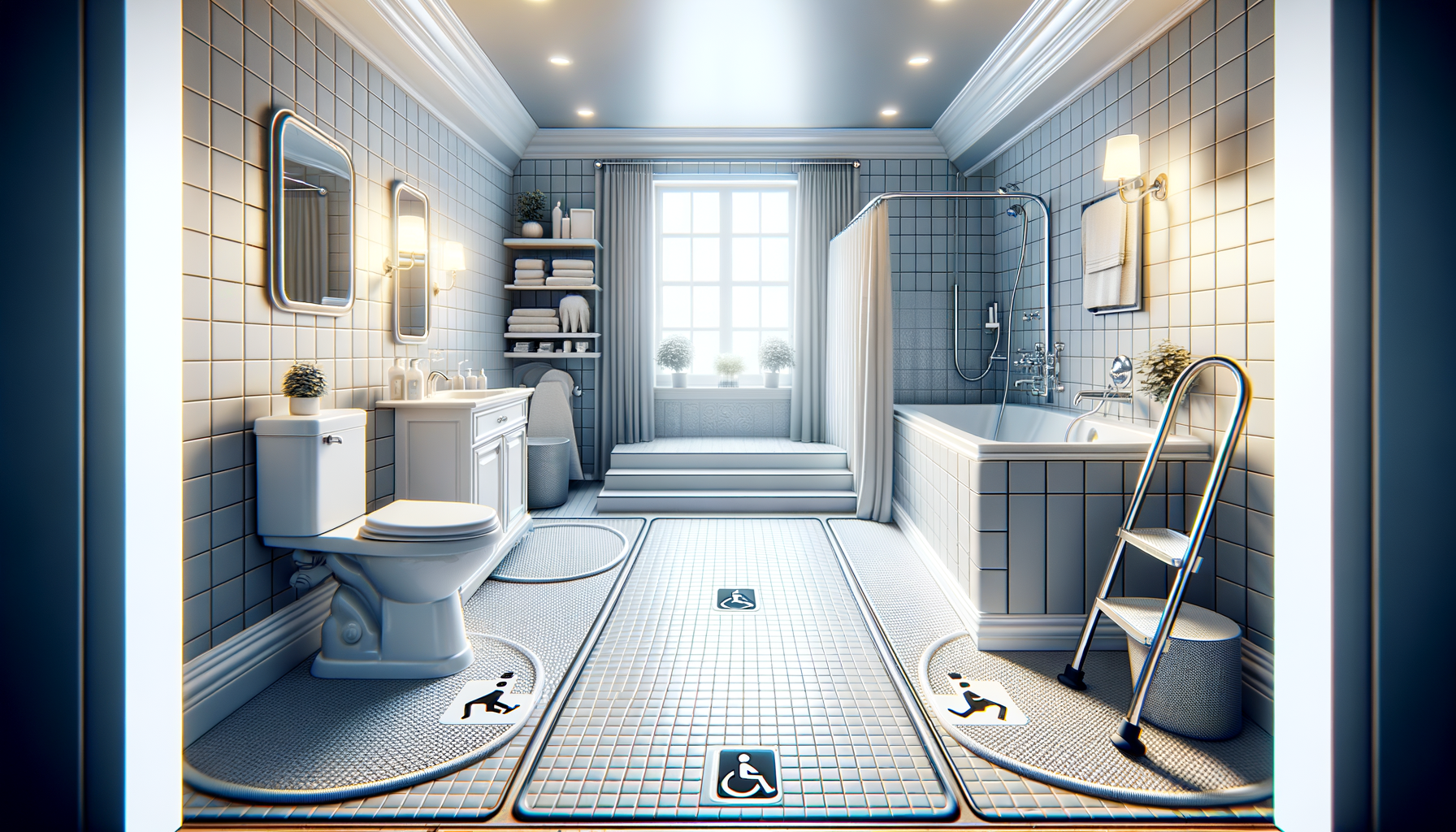Introduction to Bathroom Safety Features
Bathrooms are essential spaces in every home, yet they often pose significant safety risks, especially for the elderly and those with mobility challenges. Understanding the importance of bathroom features that enhance safety and accessibility is crucial for creating a secure environment. This article delves into the various safety features available for bathrooms, examining their layouts and ease of use to ensure everyone can enjoy a safe and comfortable experience.
Understanding Safety Features
Safety features in bathrooms are designed to minimize the risk of accidents such as slips, falls, and other injuries. These features can range from non-slip flooring to grab bars and shower seats. Non-slip flooring is particularly important as it provides traction even when the floor is wet. Grab bars offer support for individuals who need assistance moving around the bathroom, while shower seats provide a comfortable and stable place to sit while bathing.
Other safety features include:
- Anti-scald devices: Prevents water from reaching dangerously high temperatures.
- Walk-in tubs: Allows for easier access and reduces the risk of falls.
- Handheld showerheads: Offers flexibility and ease of use for those with limited mobility.
These features not only enhance safety but also contribute to a more accessible and user-friendly bathroom environment.
Layouts for Enhanced Accessibility
The layout of a bathroom plays a pivotal role in its accessibility. An open and spacious layout allows for easier movement, especially for individuals using mobility aids such as wheelchairs or walkers. Key considerations include the placement of fixtures and the width of doorways. Ensuring that there is ample space around the toilet, sink, and shower or tub is essential for maneuverability.
Additionally, the installation of a curbless shower can significantly enhance accessibility. This design eliminates the step into the shower, reducing the risk of tripping and making it easier for wheelchairs to enter. Thoughtful placement of grab bars and seating within the shower area further supports safe usage.
By carefully planning the bathroom layout, homeowners can create a space that is not only safe but also convenient for all users.
Ease of Use: User-Friendly Designs
Ease of use in bathroom design is crucial for ensuring that all individuals can perform daily routines independently and comfortably. User-friendly designs focus on intuitive features that require minimal effort to operate. For instance, lever-style faucets are easier to use than traditional knobs, especially for those with arthritis or limited hand strength.
Touchless technology is another innovation that enhances ease of use. Automated faucets and toilets reduce the need for physical contact, which is beneficial for hygiene and convenience. Similarly, motion-sensor lighting provides illumination without the need to fumble for a switch in the dark.
Incorporating these user-friendly designs into bathroom spaces not only improves functionality but also enhances the overall user experience.
Conclusion: Prioritizing Safety and Accessibility
In conclusion, integrating safety features, thoughtful layouts, and user-friendly designs in bathrooms is essential for creating a secure and accessible environment. These considerations are particularly important for individuals with mobility challenges or those who are aging in place. By prioritizing these elements, homeowners can ensure that their bathrooms are safe, functional, and welcoming spaces for everyone.
Whether you are renovating an existing bathroom or designing a new one, focusing on these aspects will not only enhance safety but also improve the quality of life for all users.




Leave a Reply